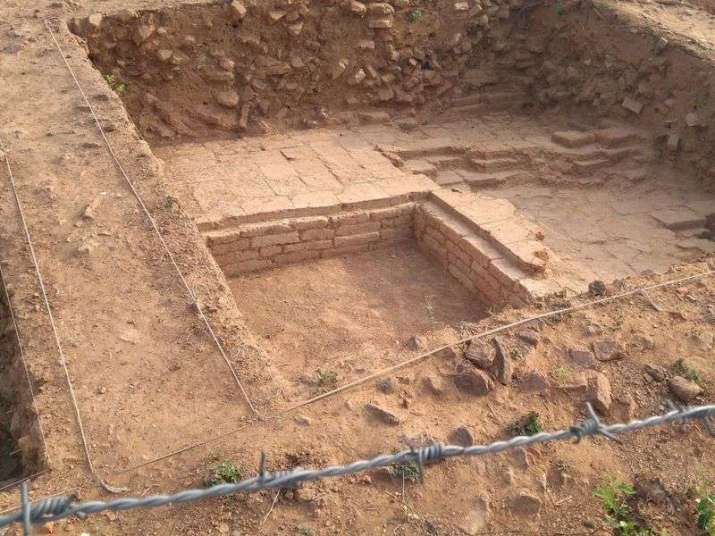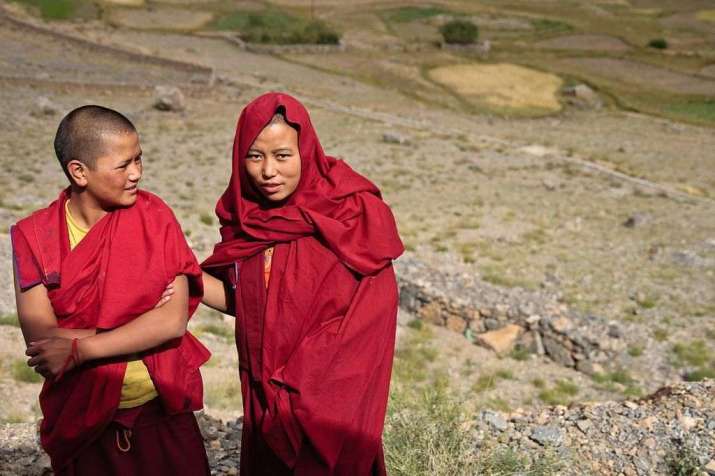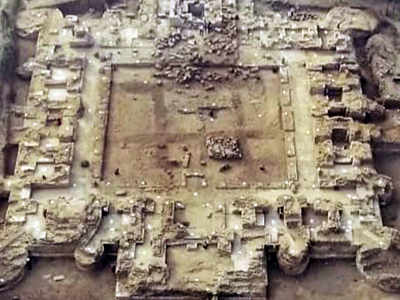
Archaeologists in India’s Bihar state have discovered what is believed to be an 11th–12th century monastery for female monastics. The ancient monastery is also noteworthy for being the first found on the top of a hill in the Gangetic Valley area, far from nearby settlements. The site is located in an area known today as Lal Pahari in Lakhisarai District, around 40 kilometers northeast of Rajgir, home of Nalanda University and Vulture’s Peak, the setting of many Mahayana Buddhist discourses, and 70 kilometers from Bodh Gaya, the site of the Buddha’s awakening.
The discovery was made under the direction of Dr. Anil Kumar of Visva Bharati University during a joint collaboration of the Bihar Heritage Development Society, a part of the Department of Art, Culture, and Youth Affairs and Visva-Bharati University, Santiniketan, West Bengal. The project was inaugurated by Bihar’s chief minister, Nitish Kumar, in 2017. The monastery is believed to have been a major center for Mahayana Buddhism.
“Monasteries have been discovered at many locations in this area. But this is the first setup located at the top of a hill,” said Kumar. “Seems the Mahayani Buddhists set up the monastery far from the hustle and bustle of the human population to practise Mahayana rituals in isolation.” (Hindustan Times)

The woman believed to be abbot of the monastery was named Vijayashree Bhadra, according to Kumar. She was patronized by the Pala queen Mallika Devi. Discovered in the area were many metal bangles, something not found in most monasteries, and further evidence that the institution was either entirely or primarily used for training women. A structural beam at the entrance to the main meditation hall depicts the bodhisattvas Manjushri and Avalokiteshvara.
“It was a vihara, named as Srimaddharmaviharik aryabhiksusanghasya,” Kumar added. “This can be translated as ‘this is the sealing of the council of monks of Srimaddharma Vihara.’ Two burnt clay seals carrying the name of the monastery have also been discovered at the site.” (Hindustan Times)
According to Kumar, the Chinese scholar-monk Xuanzang (玄奘, 602–64) wrote of the area that there were numerous monasteries, and that the Buddha had reputedly stayed in the area during his lifetime. The area was a major religious and administrative center during the Pala Empire, which ruled over the Gangetic region of northern India and parts of modern-day Bangladesh, Nepal, and Pakistan from the 8th–12th century. This was a period of great flourishing for the area’s trade and culture, as well as for Buddhism in particular.
“Importantly, the great archaeologist Alexander Cunningham too had discovered many monasteries and temples in the area and had discussed it in his book. But excavation was not conducted here,” said Kumar. (Hindustan Times)

The Bihar government has set forth plans to preserve the monastery, including a large roof structure over the site and a well-marked pathway so that visitors can find and observe the remains without damaging them.
See more
A Medieval Nun Led This Newly Unearthed Buddhist Monastery in Eastern India (Smithsonian Magazine)
First hilltop Buddhist monastery found in Bihar’s Lakhisarai (Hindustan Times)
First hilltop monastery found in Gangetic Valley in Bihar (The Times of India)












